Graduate Programs in Physics and Astronomy
The Department of Physics and Astronomy offers both master's and doctoral programs in physics.
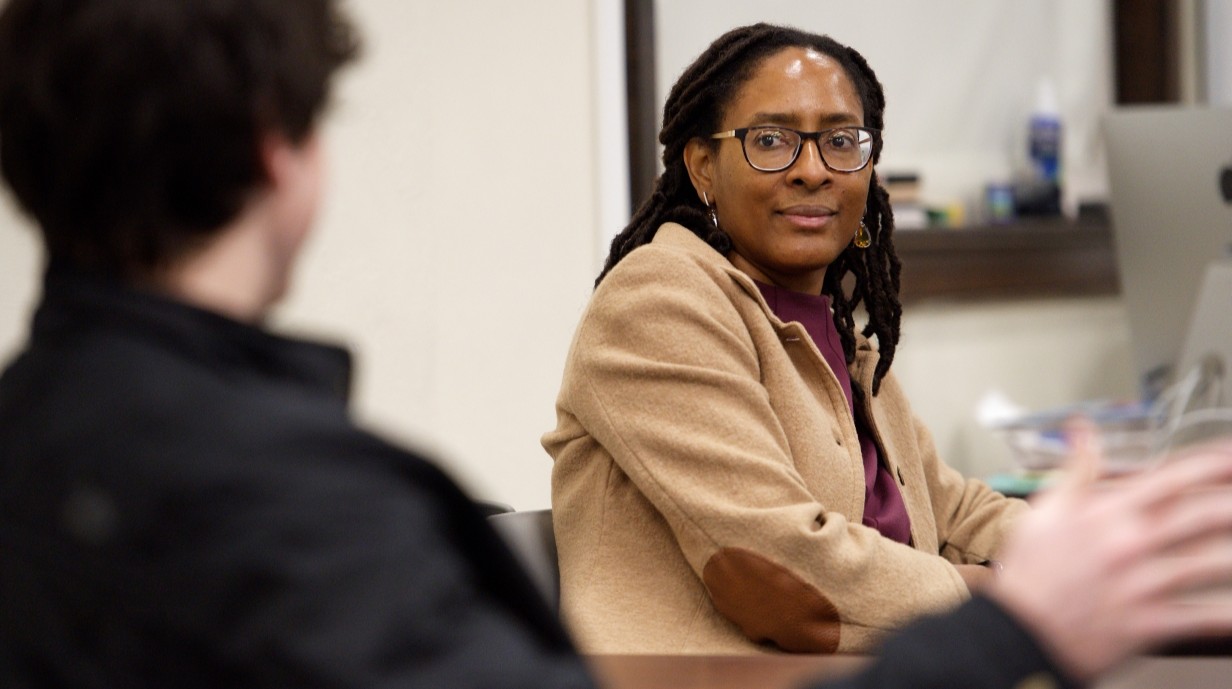
World-Class Training in Experimental and Theoretical Physics
The Department of Physics and Astronomy at The University of Mississippi is dedicated to providing a
nurturing and challenging environment for our graduate students. We take pride in our mentorship of future scientists. Our internationally recognized faculty carry out research at cutting-edge around the world and incorporate graduate students in those efforts. A degree in physics will prepare students for employment in an industrial or government laboratory or for academia.
Welcome from the Graduate Program Director
I am delighted to support our graduate students in their academic and research journeys. Our department offers a welcoming and supportive environment with cutting-edge research opportunities, world-class faculty, and a collaborative community dedicated to exploring the fundamental mysteries of the universe. We have research partnerships with the National Center for Physical Acoustics and the Center for Multimessenger Astrophysics. Whether you’re enthusiastic about pursuing research in our offerings within physical acoustics, condensed matter, gravitational, or high energy particle physics, we are committed to helping you succeed and join the ranks of our successful alumni in leading academic and industry roles worldwide. Please feel free to ask any questions—we all look forward to working with you!
Gavin Davies
Assistant Professor of Physics and Astronomy and Graduate Program Coordinator
Ph.D. Program Information
APPLICATION DEADLINE: January 15 (for Fall entry) or September 15 (for Spring entry)
The Department of Physics and Astronomy welcomes student applications with the following materials.
- Complete the Graduate School’s Online Application.
- Pay the application fee ($60).
- Submit official transcripts.
- International applicants whose first language is not English may be required to submit scores from an acceptable English language proficiency test.
- Upload Supplemental Application materials for the department on the online application.
- Statement of purpose
- GRE scores
- Resume or CV
- Two letters of recommendation: provide contact information for two recommenders
Applicants for graduate admission should have at least a GPA equivalent to a B (3.0 on the US university GPA 4-point scale) in previous university/college studies.
See the FAQs at the bottom of this webpage.
Support for PhD students is available during degree studies through a combination of the following programs:
- Teaching Assistantships (offered by the department),
- Research Assistantships (offered by individual professors with research grants), and
- Non-service fellowships (offered by the Graduate School).
Virtually all incoming students are offered a teaching assistantship for the first year or two, as a full year of teaching is one of the degree requirements. Some may switch to a research assistantship afterwards if research advisor funds are available.
Current stipends for teaching assistants for the nine months of Fall and Spring semesters are $20,000 for Ph.D. students. Students who perform satisfactorily as TAs and are making reasonable progress toward the degree will also be paid a minimum of $2,000 in the summer if they remain on campus to work.
Students with a graduate assistantship funded in the department receive a scholarship that covers some or all of the tuition and non-residency fee, if applicable, for regular semesters and subsidized health insurance.
The Graduate School’s financial aid webpage lists a variety of funding possibilities, including summer support and a recruiting fellowship program that promotes academic excellence and access to graduate education to groups who are historically underrepresented.
Khadse, Akshay, "Data driven approaches to study gravitational waves from binary black hole mergers" (2024)
Kulkarni, Sumeet, "Spins and Kicks: An Analysis of Dynamical Properties of Compact Binaries Using Gravitational Waves" (2024)
Liang, Bin, "Infrasound from Tornadoes: Theory and Experiment" (2024)
Magaña Zertuche, Lorena, "Listening to Black Holes Ring: High-Precision Ringdown Modeling" (2024).
Pokharel, Saroj, "An Amplitude Analysis of Ξ0c Decays to Λ0K−π+" (2024)
Rivest, L. Joseph, "Tidal Perturbations of Kerr Spacetime and Their Impact on Orbits" (2024)
Hill, Nathan, "Characterization of Vibrational Response of a Helical Coil Subject to Environmental Exposure and Structural Modifications" (2023)
- Abeykoon, Madusanka
- Acharya, Bishnu
- Acharya, Utsab
- Ahmed, Nauman
- Bagchi, Subhayu
- Barman, Dipika
- Benninghoff, Logan
- Campagna, Quinn
- Dye, Andrew
- Farooq, Ehsan
- Feng, Tong
- Gebeline, Paul
- Gujar, Tanmayee
- Huang, Xiaoyan
- Ishraque, Ahmed Farhan
- Karn, Bibek
- Khairnar, Aniket
- Knutson, Noah
- Liu, Guoqin
- Osei-Nketiah, Samuel Junior
- Moore, Joshua
- Moulton, Nicklaus
- Nair, Gokul Sreekumar
- Narayan, Purnima
- Pandey, Kumar
- Rabbi, Zahin
- Rai, Milan
- Rostami, Sina
- Saleh, Raisa Nawar
- Schrader, Andrew
- Sharma, Arindam
- Singh, Amitesh
- Sonia, Farhana Afrose
- Wang, Zhengwu
- Yu, Byungchul
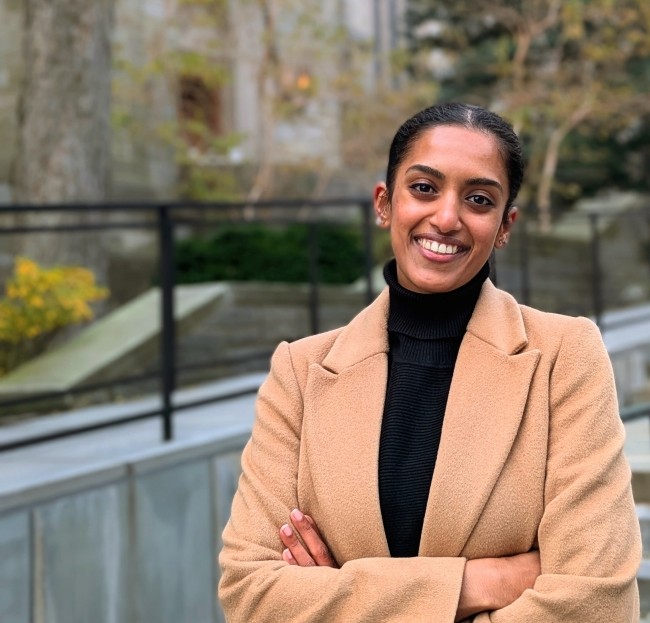
Gravity Research
"My research focuses on testing General Relativity (GR) using gravitational waves from binary black hole mergers. Current tests rely on comparing observed signals with theoretical models, but missing physics in these models can mimic deviations from GR, leading to false alarms. I investigate how missing astrophysical effects affect our ability to accurately test GR. By simulating these effects and analyzing their impact on parameter estimation, my work helps refine our methods for identifying true deviations from Einstein's theory. This ensures that future claims of GR violation are based on genuine signals rather than modeling limitations."
Purnima Narayan
Ph.D. Student
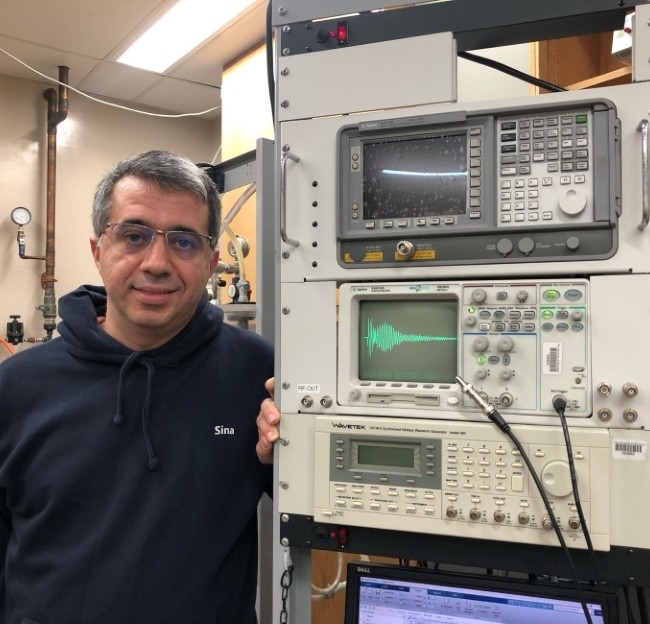
Physical Acoustics Research
"My research focuses on tunable acoustic lenses for ultrasonic beamforming, trapping, and particle manipulation. By leveraging near-field radiation forces and structured acoustic fields, I create controllable trapping zones and complex wave interactions. My work integrates computational modeling, including the Angular Spectrum Method (ASM), with experimental validation using transducers and custom apertures. These advancements improve acoustic manipulation techniques for biomedical, industrial, and materials science applications."
Sina Rostami
Ph.D. Student
Job Placement of Doctoral Alumni
Job Titles and Employers of Our Graduates
- Faculty, Boston University
- Faculty, University of Michigan
- Faculty, Mississippi College
- Faculty, Northwest MS Community College
- Faculty, Univ. of TN Space Institute
- Faculty, University of Chicago-Medicine
- Multi-Media Specialist, Penn State Univ.
- AI Engineer, Vadum
- Science & Tech Consultant, Deloitte
- Researcher, Naval Research Lab
- Geophysicist, Los Alamos National Laboratory
- Senior Data Warehouse Analyst, Sun Trust
- Researcher, Bose Corporation
- Research Associate, Fermilab National Lab
- Software Engineer, Lighter than Air Research
- Lead Acoustics Engineer, PCB Piezotronics
- Industrial Director, United Steel Structures
- Systems Engineer, Northrop Grumman Corp
- Process Engineer, Intel Corporation
- R&D Engineer, Starkey Hearing Technologies
Women in Physics

Promoting Physics Careers
Kaitlyn Thurmond (M.S. in Physics) spearheaded the reactivation of the Women in Physics group, which encourages students to pursue careers in physics. It was founded in 2016 with support from an American Physical Society (APS) grant.
M.A. and M.S. Program Information
The master's degree in physics is planned primarily to meet the needs of students who are looking forward to professional careers in physics, either as teachers or as research physicists. The M.S. degree offers an optional emphasis in physical acoustics, requires a thesis project based on original research, and is most appropriate as preparation for those interested in industrial careers. The M.A. degree requires an oral examination but no thesis and is most appropriate for those interested in teaching careers.
APPLICATION DEADLINE: January 15 (for Fall entry) or September 15 (for Spring entry)
The Department of Physics and Astronomy welcomes student applications with the following materials.
- Complete the Graduate School’s Online Application.
- Pay the application fee ($60).
- Submit official transcripts.
- International applicants whose first language is not English may be required to submit scores from an acceptable English language proficiency test.
- Upload Supplemental Application materials for the department on the online application.
- Statement of purpose
- GRE scores
- Resume or CV
- Two letters of recommendation: provide contact information for two recommenders
Applicants for graduate admission should have at least a GPA equivalent to a B (3.0 on the US university GPA 4-point scale) in previous university/college studies.
See the FAQs about the application process at the bottom of this webpage.
The Department of Physics and Astronomy offers graduate assistantships to master's students. Virtually all incoming students are offered a teaching assistantship for the first year or two, as teaching is one of the degree requirements. Some M.S. students may switch to a research assistantship afterwards if research advisor funds are available.
Current stipends for teaching assistants for the nine months of Fall and Spring semesters are $16,000 for master's students. Students who perform satisfactorily as TAs and are making reasonable progress toward the degree will also be paid a minimum of $2,000 in the summer if they remain on campus to work.
Students with a graduate assistantship funded in the Department of Physics and Astronomy receive a scholarship that covers some or all of the tuition and non-residency fee, if applicable, for regular semesters and subsidized health insurance.
The Graduate School’s financial aid webpage lists a variety of funding possibilities, including summer support and a recruiting fellowship program that promotes academic excellence and access to graduate education to groups who are historically underrepresented.Adnan, Azwad, "Branching Fraction Measurements of Ξc + → Σ+h+h− and Λc + → p+h+h− Using Belle II Monte Carlo" (2024)
Hetiiarachchi, Dinura Udayana, "Measurements of Charge Parity Asymmetry in Λc+ → p+h+h−" (2024)
McCammon, Cody Ayres, "Study of Binary Black Hole Dynamics Using Gravitational Waves" (2024)
Stacy, John Wilson, "Inclusive Measurement of Upsilon(4S) To Upsilon(1S) Decays with Belle II Data" (2024)
Bhandari, Santosh, "Action in Causal Set Theory" (2023)
Bhattarai, Devesh, "A Study of Electron Energy Response Measurement in the NOvA Test Beam Detector" (2023)
Bronicki, David, "Tidally-Induced Nonlinear Resonances in Extreme Mass Ratio Inspirals with an Analogue Model" (2023)
Dhital, Ayush, "Black Hole Entropy in the Causal Set Approach" (2023)
- Irby, Coleman
- McCollum, Murvis
- Roth, Harrison
- Sharma, Nancy
- Thurmond, Kaitlyn
Job Placement of Master's Degree Alumni
Job Titles and Employers of Our Graduates
- Manager of IT and Faculty Tech, UM
- Teacher, Jefferson County Schools
- Teacher, St. Joseph's Academy
- Faculty, Mississippi State University
- Acoustic Systems Analyst, Johns Hopkins
- Faculty, Meridian Community College
- Faculty, University of Oxford
- Dean, University of West Florida
- Faculty, Georgia Southern University
- Physical Scientist, US Bureau of Mines
- Network Administrator, MTrade
- Medical Physicist, Texas Oncology
- Senior Physicist, Dept of Defense
- Senior Consultant, Nordic Consulting Partners
- Mech. Engineer, Military Sealift Command
- Controls Engineer, BorgWarner Emissions
- Research Tech, Los Alamos National Lab
- Senior Technical Advisor, Fed Ex
- Lead Hardware Engineer, Raytheon
- Manager/Owner, Nuclear Associates
- Research Physicist, Radiance Technologies
- Engineer, Animax Designs
- Anesthesiologist, St. Vincent Infirmary
- Research Scientist, Oak Ridge National Lab
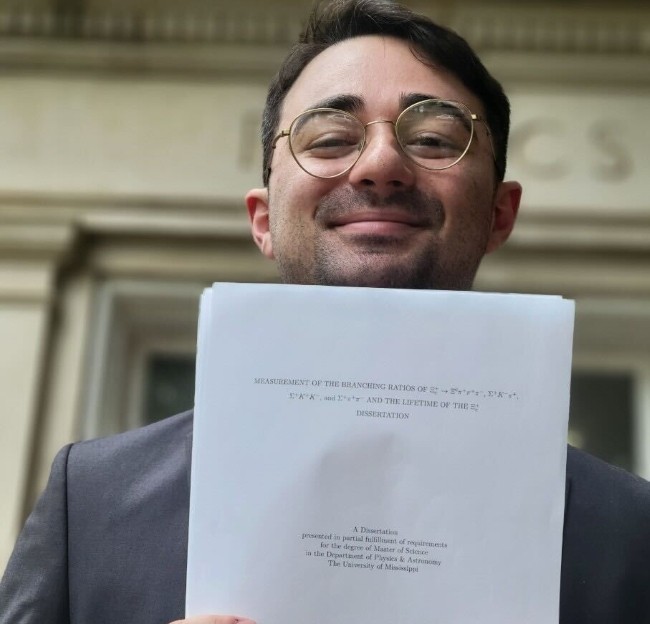
Particle Physics Research
"With a fraction of the current Belle II dataset, world-leading measurements of charmed hadrons (hadrons with a charm quark) lifetimes have already been reported for various D mesons and the Lambda_c+, which was measured by our own Dr. Jake Bennett. Precise charmed lifetime measurements provide a test of the Heavy Quark Expansion (HQE), which is used to predict decay-widths of processes beyond the Standard Model. My main research area is performing such measurements on charmed baryons, particularly the Xi_c^+, which is the subject of my M.S thesis and will soon enter collaboration review for publication."
Paul Gebeline (M.S. in Physics '24)
Ph.D. student
Promoting STEM
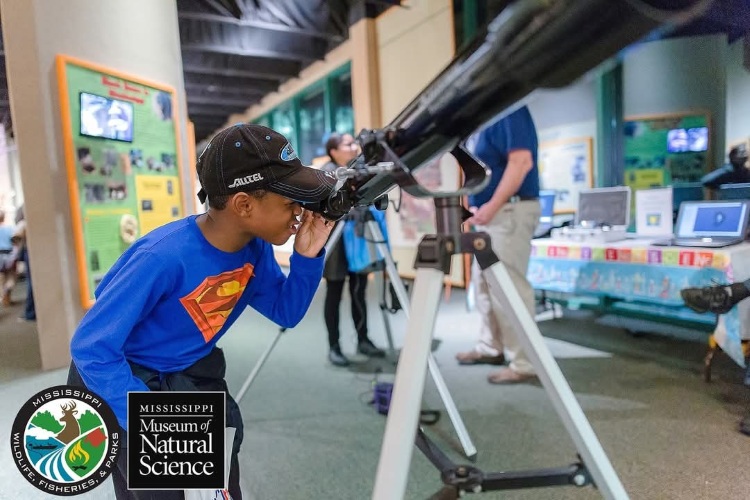 We are proud of the many examples of physics graduate students promoting science education and STEM careers both on and off campus.
We are proud of the many examples of physics graduate students promoting science education and STEM careers both on and off campus.
Science Makers. Graduate students participated in the "Science Makers" event with about 500 attendees at the Mississippi Museum of Natural Science in Jackson, MS, on Women's Day.
Environmental Day. Our students took part in an outreach event for Environmental Day at the UM Field Station.
Policy Advocacy. Lorena Magaña Zertuche (M.A. '23, Ph.D. in Physics '24) attended the 2024 American Physical Society's Annual Leadership Meeting as a student representative of the Division of Gravitational Physics. She visited with members of Congress to discuss science research funding and policies.
Frequently Asked Questions
We perform a holistic evaluation of all components of applications and do not admit based on GRE scores alone. However, competition for admission to the program is strong and students who score less than 158 on the Quantitative GRE are rarely admitted, with scores higher than 160 being typical.
It is not required, but if one is available it can be sent as part of your application package.
Applicants who are unable to have official documents submitted immediately can request a preliminary department review of their application using unofficial documents. Note that any result of the evaluation will be conditional on receipt of official documents and that admissions cannot be processed without official documents.
The Graduate School requires a GPA equivalent to a B (3.0 on the US university GPA 4-point scale) or higher in previous university/college studies. For international students, the Office of International Programs will determine your equivalent GPA after you submit an application with a transcript from your institution. The Department of Physics cannot determine your equivalent GPA.
The academic CV should include pertinent information about anything to do with your academic life; awards, scholarships, and other accolades. It does not need to include personal information (e.g., age or marital status) or work experience not directly related to the proposed program of study.
Faculty in a given research area determine whether they are able to accept students at a given time. You can be admitted to the program without being attached to a particular group, which is quite typical. Please see the next bullet point.
Yes, you can apply. However, please review our research areas described on our website and make sure that you have some interest in one or more of them. In your statement of purpose, indicate that you are uncertain of the particular field that you might like to do research in but give some indication of which our major research areas you believe you may fit in and why.
Virtually all students accepted to our graduate program are provided with full financial support via teaching assistantships and scholarships.
